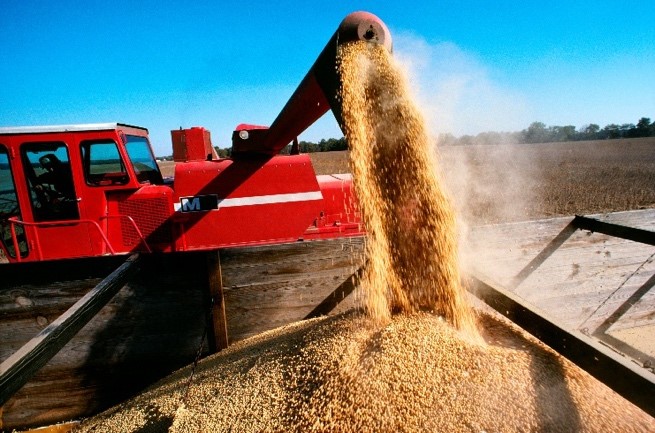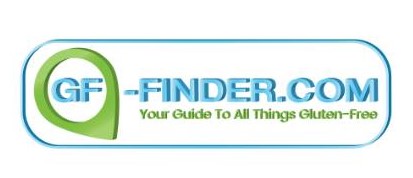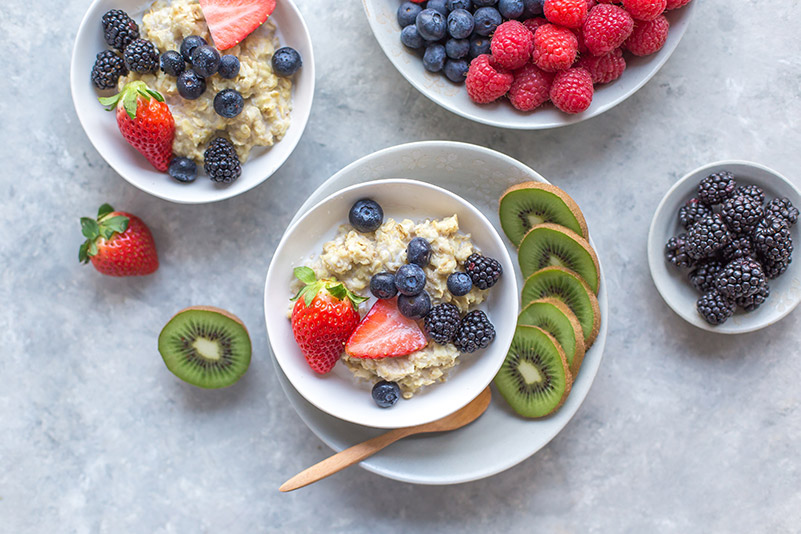Although oats, by nature, do not contain gluten, the topic of oats and the gluten-free diet has been a confusing and controversial topic for the gluten-free community. The issue has been that oats are generally grown and farmed in fields next to other gluten containing grains such as wheat, rye, barley and triticale (a hybrid of wheat and rye), and as a result can become cross-contaminated with gluten.
Fortunately, for people who need to avoid gluten in their diet, there is an oat option available in the market commonly referred to as Gluten-Free Oats, Pure Oats or Purity Protocol Oats. These oats have been grown and processed with strict farming protocols and dedicated equipment to reduce or eliminate gluten entry points during seeding, growing, harvesting, transportation, milling and packaging stages. These added methods often make purchasing gluten-free oats more expensive, but the benefits ensures a safe oat product is available for people with celiacs disease or gluten intolerance, along with the added nutritional benefits and increased meal options.
Why can oats contain high levels of gluten?
Oats are a uniquely nutritious food and high source of soluble fibre. However, although oats are an inherently gluten-free grain, an oat kernel is highly susceptible to gluten-cross contamination during growing and processing. Thus precautions must be utilised for the gluten-free consumer to reap its nutritional benefits.
There are numerous reasons why oats can become cross-contaminated with gluten. This is why it’s important when purchasing oats to read the packaging label and understand where the oats come from, how they are processed and if they are gluten-free. Here are a few explanations:
In the fields

Oats are generally grown in fields next to wheat, rye, barley and triticale. As a result, the oat crops often become cross-contaminated when particles from the gluten-containing grains become airborn and settle on the oat crops. Farmers will also rotate growing different crops in their fields during the same growing season or from time-to-time. This means oats become planted and grown in the same fields that previously grew gluten-containing grains. As a result, non-invited gluten containing seeds left behind in the fields will grow within the new oat crop. These unwonted gluten containing particles are very difficult to remove at the harvesting and processing stages.
Harvesting and Transportation

As you can imagine harvesting is a dusty process. Typically, farmers, do not clean the harvesting and transportation equipment between handling gluten-containing crops and oats. As a result, gluten particles will remain on the equipment and when the oat crops go through the same harvesting and transportation process, these unwonted gluten particles will find their way into the oats crops.
Milling and Processing

Once harvested, raw oats are then further processed to make an edible food product. Similar to how oats can become gluten contaminated during the harvesting and transportation stages; milling processing in the oat production will also lead to co-mingling of the oat grains with gluten particles. Mills and processing facilities also typically do not clean equipment between handling gluten-containing crops and oats and as a result, unwonted gluten particles will find their way into the final oat product.
Gluten-Free Labeling for Oats
Oats are a uniquely nutritious food and high source of soluble fibre. However, although oats are an inherently gluten-free grain, an oat kernel is highly susceptible to gluten-cross contamination during growing and processing. Thus, precautions must be utilised for the gluten-free consumer to reap its nutritional benefits. The two predominant issues with supplying gluten-free oats are reducing the risk of exposure to gluten that may be present in oats due to cross-contamination and the challenges of technically producing a gluten-free oat product as defined by legislation.
By limiting the use of oats to use the term “gluten-free” makes it easier for people with celiacs disease and gluten sensitivities to distinguish gluten-free oats from other commercially available oats that could otherwise contain higher levels of gluten due to cross-contact with gluten-containing grains. Therefore, as with any other non-gluten-containing grain, legislation in the United States permits “gluten-free” labeling for food containing oats only if the food contains less than 20 parts per million (ppm) gluten. Oats that contain 20 ppm gluten or more are not permitted to make a “gluten-free” claim.
Purity Protocol Oats Vs Mechanically / Optically Sorted Oats to Achieve Gluten-Free
For those who require a gluten-free diet, it is important to understand the differences between purity protocol and mechanically / optically sorted oats.
To produce a ‘pure oat’, producers will follow strict production protocols and meticulous controls. These includes selection of oat seeds, checking for potential contamination during the growing process, using dedicated gluten-free equipment during harvesting, transportation and milling, and performing rigorous gluten testing to scrutinize the quality of oat batches.
Mechanically / Optically Sorted Oats on the other hand have been specially processed to bring oats within safe levels for people who cannot eat gluten. These producers use highly sophisticated mechanical and / or optical sorting equipment to remove gluten-containing grains from regular commodity oats. These specialized equipment technologies can separate grains according to their shape, size, colour and density. Although a very high percentage of gluten-containing grains can be removed using these technologies, the complete elimination of all whole and broken kernels of gluten-containing grains from oats is not always possible. Also, the separated oats may have traces of gluten-containing grain dust. This process still needs to be fully investigated and formal industry standards created so all operators use the same test protocols.
National Celiac Association (NCA) Stance on Gluten Free Oats
NCA is more comfortable with the purity protocol process at this time. If you choose to eat gluten-free oats, check the package for clear labeling that the product is labeled gluten-free. NCA further recommends that you assess each manufacturer individually regardless of whether they use purity protocol or mechanically sorted gluten-free oats. The complete NCA article can be found at: nationalceliac.org.
Banner photo by Melissa Belanger on Unsplash

